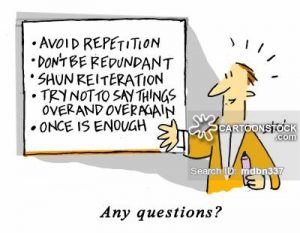Presentations

Besides taking part in several workshops dedicated to the skill of presentation, several opportunities were afforded me to practise my presenting skills My very first experience was being a facilitator for the group focus group on the 6th February. Although this was not a presentation per se, many of the challenges discussed in subsequent workshops were applicable. Subsequent opportunities included my very first presentation, and three presentations that dealt with my proposal.
Certain points were reiterated during the workshops and practice sessions. In summary, I noted these down as:
- Presenting in consulting. Presentations are an integral part of the consultation scenario. They can occur when presenting a proposal to a client, when presenting an interim report to a client to highlight progress that has been made or problems encountered, or when presenting final results to the client n addition to as written report. I experienced this during my placement at the BMR where the final report for the Unisa library project was presented to a group from the Unisa library. This presentation enabled the BMR to provide an overview of what was presented in the final report and allowed the client the opportunity to ask questions.
- Body language/nervous. The body language is something visible to the audience and is also communicating a message
- Capturing audience. The importance of an introductory “hook” to grab their attention
- Confidence. This relates to body language. Confidence on the part of the presenter makes the message more believable.
- Eye contact (with respect to confidence). Eye contact with the audience is essential to maintain their interest
- Content. Despite showing all the abovementioned aspects of presenting, if the content is not viable, the presentation will not succeed. There needs to be a certain logic and coherence present. A keyword here is structure
- Understanding the message. This requires the presenter to ensure that her audience understands the message that is being conveyed or described. In my final trial run for the proposal defence, this was seen as a problem in my presentation leading me to a simplification of the title and content.
- Tone of voice. The tone should be measured but not monotone
- Communication and sharing. The goal of presentations is communication of information. This implies also that communication is sharing of information
- Dress code. This should be appropriate to the situation, audience and subject.
Pitfalls in presentations – These all seem to have to do with reducing stress on the part of the presenter
- Powerpoint slides. These should not be overly cluttered with text as they then become difficult to read and there should not be too many
- Know material. Many of the challenges that occur during presentations can be avoided through a thorough knowledge and familiarity of the material that is being presented
- Practise makes perfect
- Reflect about meaning (central theme). Be clear about the message you are presenting
- Arrive on time. By arriving on time you can avoid stress build-up prior to the presentation and can also iron-out any problems that may occur with the venue etc.
- Check equipment. By arriving on time you will also have time to check your equipment to avoid malfunction during the presentation
- Know the presentation environment. This also helps alleviate stress
- Find out your audience. Knowing your audience means that you can adapt your presentation to suit them and to make your presentation more understandable and ultimately more enjoyable
My fears and challenges
During the various workshops we were asked to reflect on what our fears and challenges are when presenting.
- Looking stupid
- Fear of being laughed at
- Body language problems
- Speech problem makes it difficult to articulate
- Forgetting words – mind goes blank
- Misunderstanding
- Questioning – what do you mean
